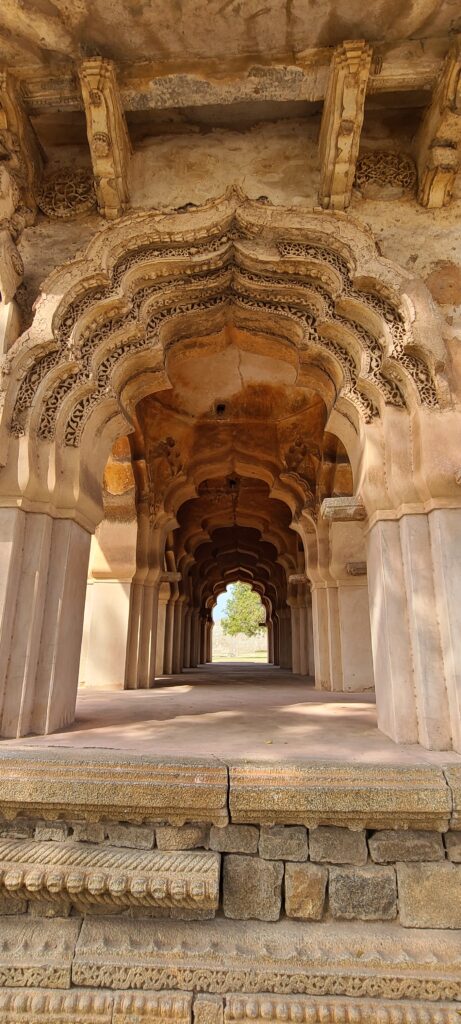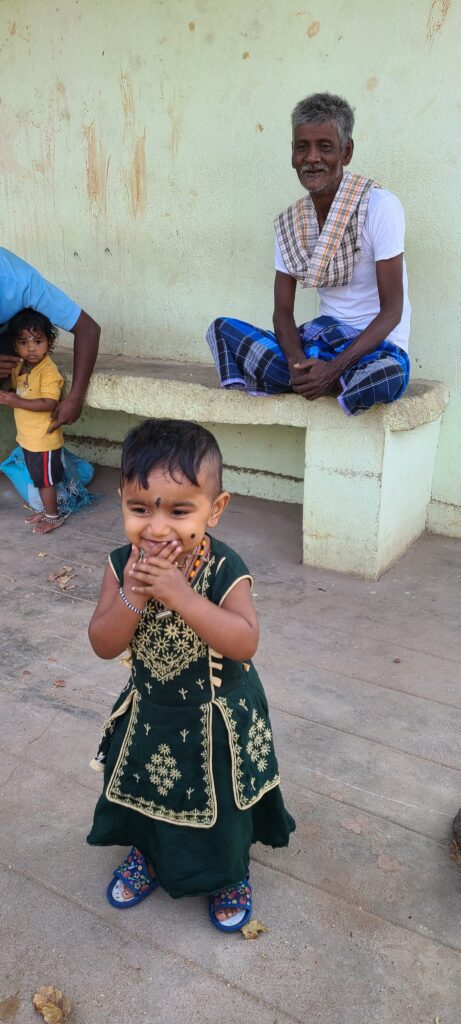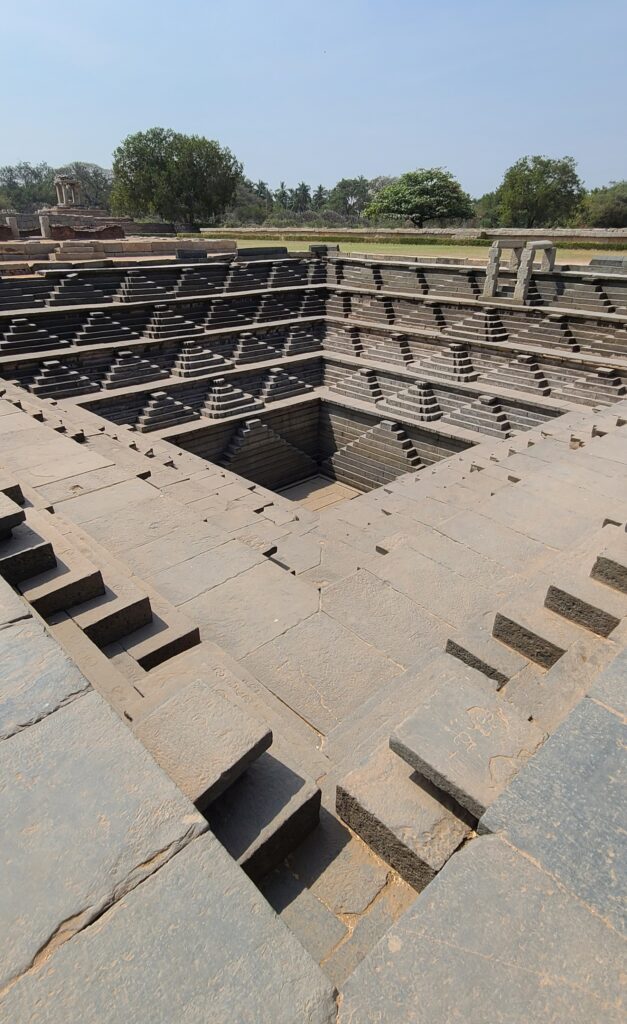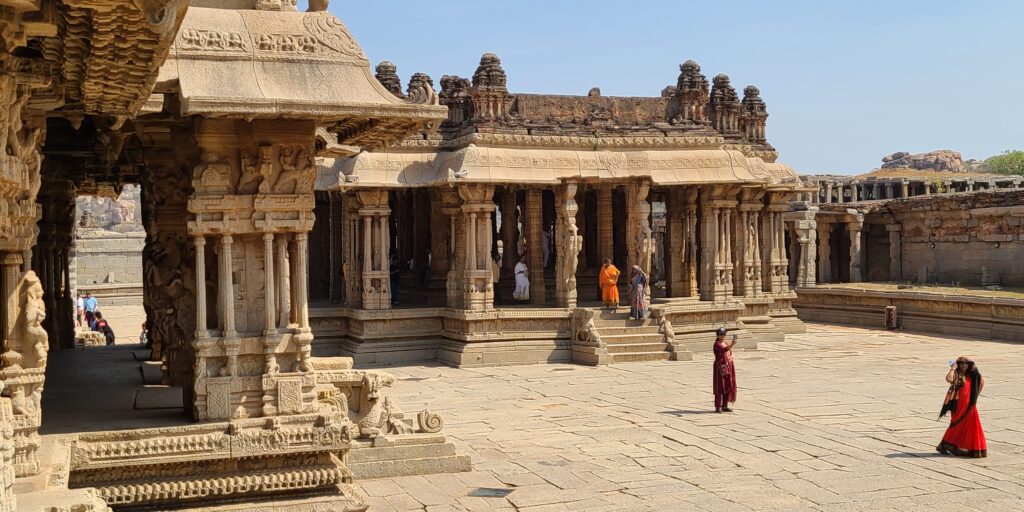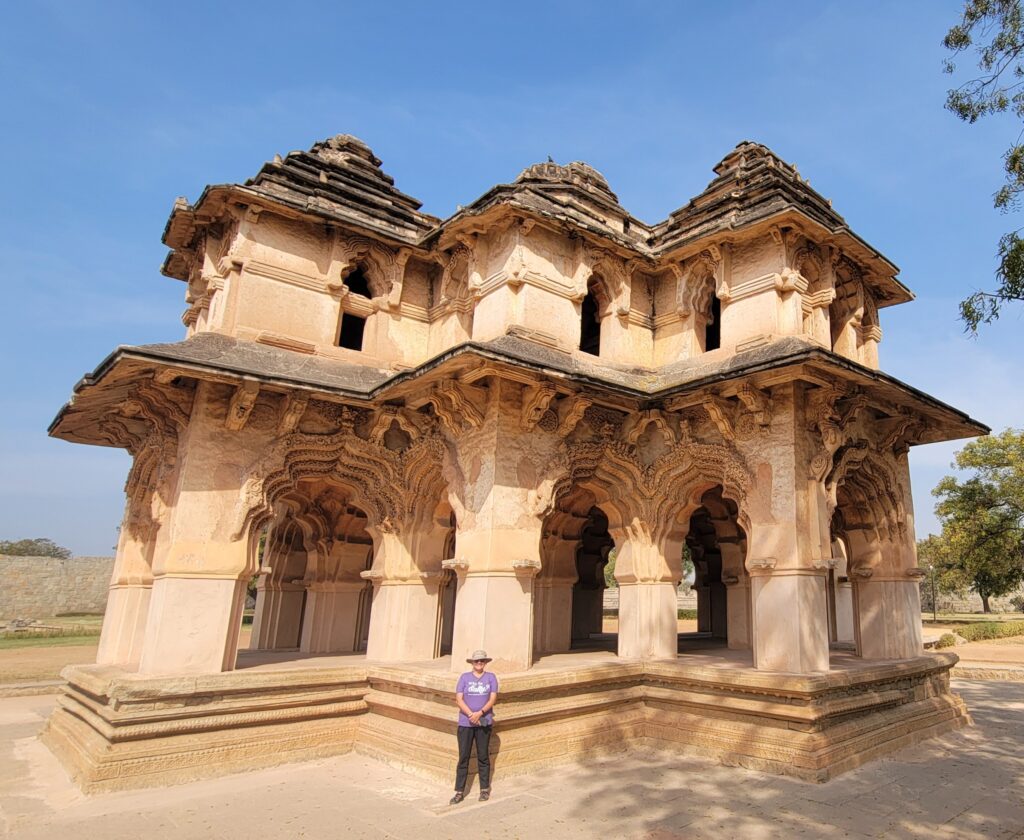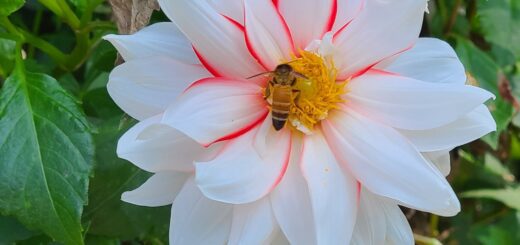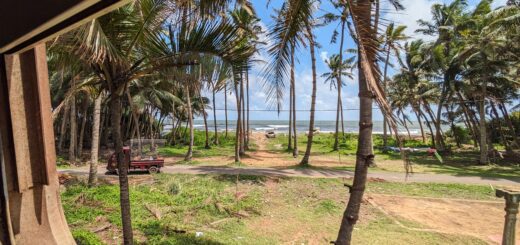Hampi, India #39
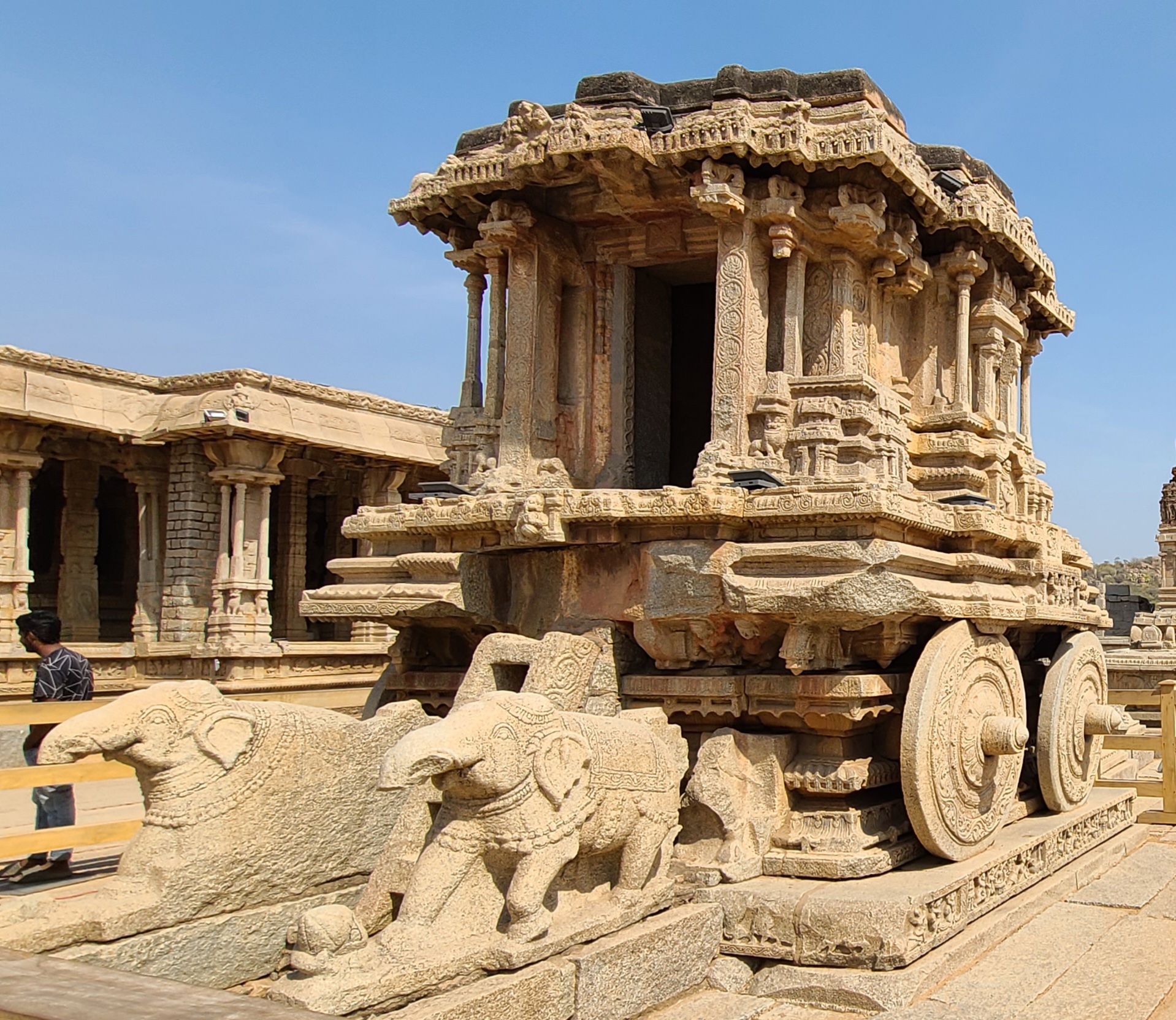
January 30
Today we readied and had breakfast of Egg Bhurji (basically a spiced scrambled egg mix) with toast, papaya wedge, and masala tea for Jeff and me some of my coffee. Finished and went down, meeting Tricia. We three are sharing a tuk-tuk adventure to the pay temple sites today.The morning is sunny and warm. We head to the main road to catch our prearranged tuk-tuk. We waved and exchanged our morning hellos with the local kids. One very cute child, Tricia and I captured on camera. He is animated each day we have seen him, adorable. On the main road – no driver. Jeff called him. He’s coming he said.. he was late by about 15 minutes. Jeff discussed the what we wanted to see and agreed to a price. So we start at 0915.
We arrived at our first place, Prasanna Virupaksha (Underground Shiva) Temple. It derives its name because much of the temple is below present ground level, which leaves many parts with standing water. The temple is datable to the 14th century. There is one shrine area that has the nandi (a bull) idol, laying in shallow pool of water. It made for a very interesting start!
Now we enter a big area called the Royal Center/Enclosure.
We saw Mohammadan Watch Tower, Band Tower, and Mosque, which are located in this Mint Area and Dandanayaka’s Enclosure. It was a big open area that was enclosed by walls. There were three towers standing. Not sure where the Mosque was, as a specific place was not labeled. Next in the enclosure was the Krishnadevaraya’s Palace. All that remains is the foundations of what was the palace, but you can imagine the grandness of it all. Then was Hazara Ramachandra Temple. Next we go to a different section.
We go to Zenana Enclosure. Here it is fenced in and we buy a ticket (to pay for this and only two other pay places). This enclosure has Jal Mahal, a water pavilion or tank. Next was the foundation of the Queen’s Palace, which was a pretty elaborate foundation. Now was the best ruin here, Lotus Mahal. It is a two story, building. The first story is open with pillar that are topped by many arches. It made for a very picturesque setting. You can not go in it – to the second story, and the placard does not describe what this structure is for. But nonetheless it is fascinating. Then there were more Watch Towers. Next is the Guard’s House, which has been converted to a ‘sculpture garden’. It, too, has an arched corridor, but the middle is open to the sky and elements. It showcases many sculpture carvings of the Hindu gods. We left here for the Elephant’s Stable. It is thought to be a elephant’s stable, or maybe, an administrative building for the palace… in other words they do not really know it’s function. But the title of ‘Elephant’s Stable’ must be the prevalent theory as the building is given this title. (It is the one I like to imagine the best.) This impressive building has eleven domed chambers. The domes are different, but symmetrical from one side to the other. Each chamber is large enough to “pen” an elephant. The Guard’s House and the Elephant’s Stable make up two sides of a plaza or squared open area in front of them. [The square is being set up with a stage and chairs for the upcoming festivities this weekend. There is supposed to be a big influx of people, due to a minister coming. (i’m personally glad we won’t be here for this.)]. From here we go to several lesser temples in this enclosure area. They were great in their own right, but this area kept going… and going. We wrapped it up and went back to our tuk-tuk to move on.
Next area (this is still under the Royal Center supercomplex area) was Mahanavami Dibba. It is known as a “great platform” structure. [I am going to put in a qualifier here: much of the information I am writing about is from placards that relate their information from a Portuguese traveller… so yada, yada, yada,… there is a bunch of probable’s and maybes, with little definitelies.] Anyway, the platform is a great overall view of this area. The structure itself is made with some very dark, green schist (appears black) alternating with the sandstone and granite, giving a standout contrast. Then there are many other structures here, but we went to the primary structure, the Blackstone Pushkarani. It is a most unique tank or pool. It is made solely of this dark, green schist and was only excavated in 1988! The pool is very deep, consisting of five stages of stepping platforms, leading down to the final much deeper sixth stage. The steps going down are symmetrical and very precisely uniform. It is a great example of precision cutting and presents a very aesthetic look. Really amazing! And just excavated in 1988 – Incredible! We wandered around a bit more, but essentially, load back up into the tuk-tuk.
Next we go to the Queen’s Bath, again, this is what it is believed to be… maybe so, maybe not! Anyway, it is built like a fort! It has thick walls, encased by a ‘moat’. Tricia said she was expecting a drawbridge. 🙂 Inside it seemed a very luxurious place for bath. Great carvings still existed, but there was not any water. Finished we loaded back in the tuk-tuk and left to go to the museum.This is the second entry place of our pay ticket.
The museum had lots of stone carvings everywhere, and a brief synopsis of the Vijayanagara Empire. But the best thing here for us is a big, overall, to scale, model-map of the Hampi area! This made us wish we had come here the very first day!! There were also a few coins, artifacts, and some copper plate with inscriptions & palm leaf manuscripts. Finished up and in our tuk-tuk we go to our last area.
We arrive to the third and final pay place on our ticket, Vitthala Temple Complex. But our tuk-tuk has to drop us off and we have to either line up and take an electric cart one km to the complex or walk it. Our tuk-tuk driver recommended us to walk because he wants us to be done and back in 30 minutes! Really!?! Well, that is not happening. But we did not dawdle, and felt pressure to return before we were ready. Anyway, we walk down the very wide Vitthala Bazaar area. We passed by Kuduregombe Mantapa, which is a temple on the way to the complex. It is outstanding because of the sculpted horse carved pillars lining the porch of the small temple. They were still in great condition and somehow seemed more red colored stone. We finally arrived at the complex to a mostly intact multi-storied intricately decorated gate entry. Once inside there is just so many lesser shrines and temples of this complex, but the carvings are by far in the best condition we have seen in Hampi. The workers were also at the ‘top of their game’, so to speak. The elaborateness and intricacy of the carvings… so labor intensive. Some of the pillars have like twelve carved columns in each pillar. Simply… Amazing!! We meander around in awe. Every angle is seems a great picture. We had a nice diversion with a chipmunk-like squirrel in one of the temples. Then the piece in this complex that everyone comes to see – the stone car, or stone chariot. It is a multi- sectioned carved carriage or chariot. Beautiful!
A bit overwhelmed, we head out and pay the 10 rupees (12.5 cents) each to go back. Boarded our tuk-tuk and head back to New Hampi, having our driver drop us off in front of a restaurant, Shanthi Restaurant. Jeff and I shared two dishes – mushroom fried rice, paneer masala, and two chapatis. Tricia had jeera (cumin) rice, mix veg curry, and a chapati.
Finished we went back to our place for a much needed siesta. Then at sunset Tricia joined us on the rooftop. She had put in a beer order to Kiran. So we finished the day relaxing, recapping the great day we had shared.
